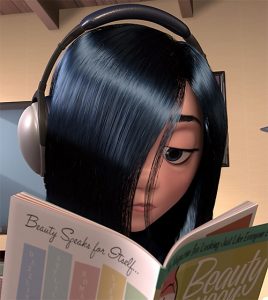When we were young, there was something that was popular to hate, whether it was a movie series or a musical artist. I remember when I was in school, it was popular to hate the Twilight series, Justin Bieber and One Direction. I went to an all-girls school, and it was normal to have something negative to say about those things, even if it was a lie. This is internalized misogyny – which is defined as: “sexist behaviors and attitudes enacted by women toward themselves or other women and girls.”
Internalized misogyny creates comfort for the enactor through tearing down girls who reflect back one’s insecurities, and reinforces that there are things girls shouldn’t do, even if those things are perfectly normal behaviors or opinions. It also reinforces the notion that things made for and by women are unimportant. This idea of tearing down girls and their hobbies or preferences is not just in media, but also in everyday life where people create excuses for why girls are into “hated” things. Returning to the Twilight example, Madison Morin explains why she hated Twilight as an 11-year-old:
Personally, I remember watching the “Twilight” series at the ripe age of 11-years-old and claiming it as substandard. I was one of those kids that rebelled against the color pink because I associated it with femininity. At the time, loathing “Twilight” simply seemed like the right thing to do. I remember hearing older women I looked up to in my life criticize the portrayal of Bella as “weak and whiny.” Naturally, I accepted this ideology as true. In addition, disapproving of something that feminine individuals typically enjoyed made me feel like I had an edge; something that made me “better than other girls.
As evidenced in Morin’s recollection, internalized misogyny is subtle and relies on people not asking questions in order to survive and reinforce the patriarchy. There is a sexist norm, especially among young people, that writes off feminine media as annoying and shallow. This pits groups against girls and justifies bullying.
Internalized misogyny can look like:
• Saying: “I’m not like other girls.”
• Using gender norms to dismiss or tear down other girls, such as claiming pink is “too feminine” of a color.
• Creating negativity around feminine things in order to belong.
• Feeling inferior for liking feminine media.
While internalized misogyny may be subtle in the school yard, news media is a more visible culprit of perpetuating negative stereotypes about feminine fandom in general. The belittling of girls for their fandom is not new, and many point to the hysteria around The Beatles as the first example of girls being criticized for their fandom. Hysterical responses to fandom are commonly criticized by those who think that girls’ expressions of joy are too chaotic or unfeminine. The word hysteria has serious historical connotations in interpreting women’s emotional behaviour. As girls found more things to enjoy and continued to react strongly, wider society turned against them, and those things that girls get excited about are deemed as lesser than other interests – hence, “hysteria” is applied to anything deemed not appropriate for girls’ interest.
Social media has also played a massive role in girls evolving their fandoms and interests. Because of social media, girls were able to connect with each other in ways that were not possible before. Out of this development came sites like Tumblr, where people all over the world could create blogs for their particular interests. There is also specific lingo that people use to bond over their mutual excitement, especially girls who would have previously been targeted for having those interests. Today, social media platforms aid in creating understanding and discussion about the issue of internalised misogyny, and how to combat it, while also providing girls with a greater sense of community and acceptance around their authentic selves.
There is always going to be enough room for women to be whole without tearing each other down, and so it is important to fight internalised misogyny in media and everyday life. Girls are passionate about what they like, and so that passion deserves to be valued, not scorned.
-Emily Rawle
Junior Girl
Girl Museum Inc.


love how true this is. it’s also so refreshing to see girls in fandoms notice this behavior towards them and ignore it. I’m still learning to enjoy the feminine things I deprived myself of a long time ago